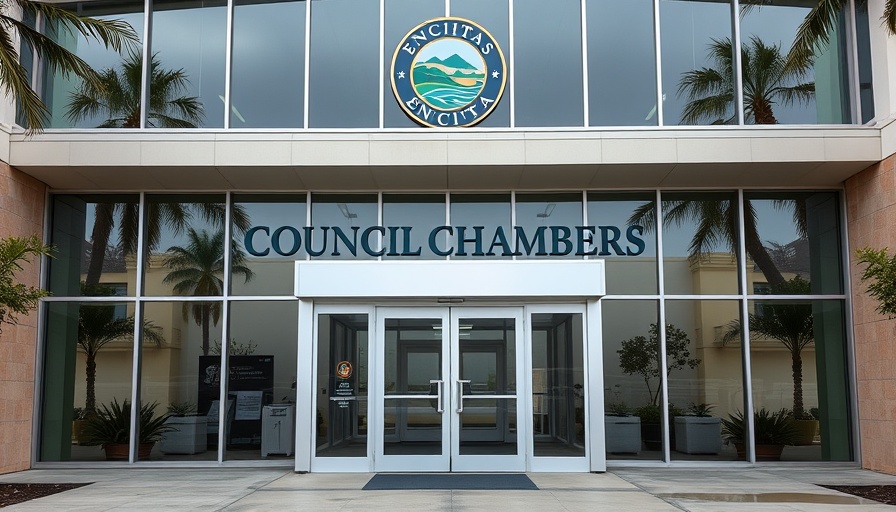
Councilmember Under Fire: Allegations and Responsibilities
The Encinitas city council has found itself in a precarious position as Councilmember Luke Shaffer stands accused of felony assault and misdemeanor hit-and-run. These serious allegations stem from an incident where he reportedly threatened a member of the public and caused property damage with his vehicle. Such behavior not only raises questions about personal responsibility but also about the integrity expected from elected officials.
The complaint, as reported, notes that councilmembers have a duty to conduct themselves in a way that does not exploit their position for unlawful threats, specifically mentioning the denial of permits or other entitlements as methods of retaliation. Should Shaffer be convicted, he could face significant penalties—up to four years in prison for the felony and additional jail time for the hit-and-run. This situation calls attention to the importance of ethical leadership in local government.
The Broader Implications for Local Governance
What does this mean for the residents of Encinitas? As city officials, council members are expected to lead by example; yet, instances like this bring to the surface fears about accountability and trust within government. The public’s confidence in its elected officials could be severely undermined if such behavior is overlooked or inadequately addressed.
The community is left wondering how such allegations will impact legislative decisions and ongoing projects, especially given the potential power dynamics at play. For example, impactful decisions that could affect zoning laws, community safety, or local funding may become contentious if the public perceives a lack of transparency or ethical governance.
Historical Context: Understanding Political Accountability
Taking a deeper look into political accountability in San Diego offers insights into how the public and fellow politicians might react in response to such accusations. Historically, both state and local politicians have faced scrutiny for misconduct, with consequences ranging from resignations to corruption charges. This ongoing dialogue around accountability reminds constituents of their right to demand integrity from their leaders.
For instance, previous cases where local council members faced similar allegations underline a pattern where community backlash can be swift and unforgiving. Citizens in San Diego increasingly use social media and grassroot campaigns to voice their concerns about local governance. The repercussions can lead to quick political exits or a reshaping of council priorities—all reflecting public sentiments.
Potential Outcomes and Future of Local Governance
As the legal process unfolds, residents are left with questions regarding the future direction of their local government. This incident could trigger a broader discussion about local laws and regulations concerning conduct and penalties for misuse of power. It sets the stage for a potential reevaluation of safeguards that ensure council members act in the community's best interest.
Engagement from community members will be pivotal during this time. Public meetings could see heightened attendance as constituents will likely want to express their opinions on council governance and call for enhanced accountability measures.
Conclusion: Standing Together for Ethical Leadership
As the situation with Councilmember Shaffer develops, it serves as a reminder of the responsibilities elected officials hold and the expectations their constituencies have. It’s an opportunity for residents to stand united in advocating for ethical integrity and accountability in local governance. By holding elected officials to a high standard, communities can ensure that their voices are heard and respected in local decisions—ultimately guiding Encinitas towards a path of transparency and integrity.
 Add Row
Add Row  Add
Add 




Write A Comment